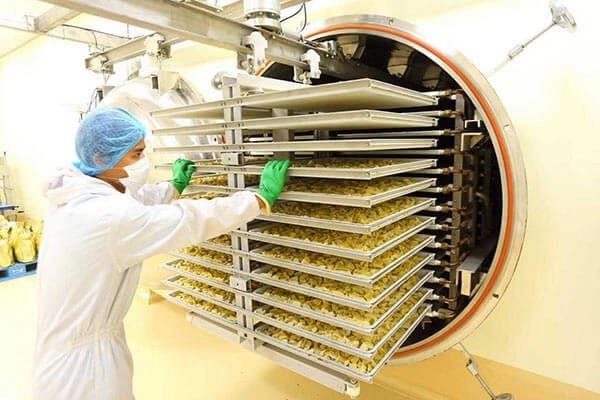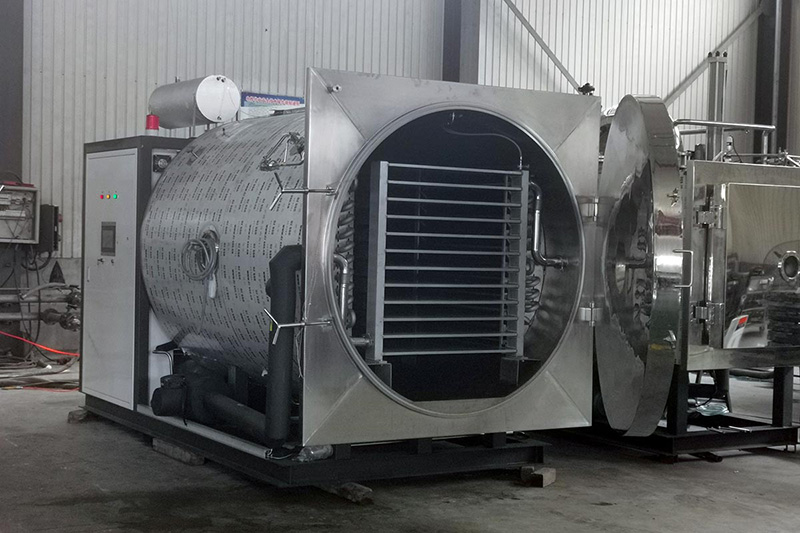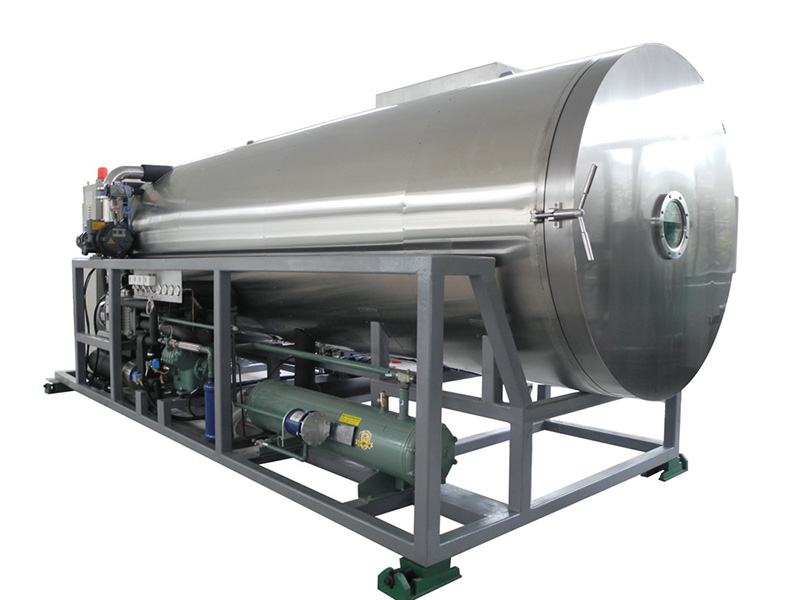
Content Menu
● Introduction to Freeze Drying Technology
● Understanding the Freeze Drying Process
● Types of Freeze Dried Machines for Food
>> 1. Home Freeze Dryer
>> 2. Commercial Freeze Dryer
>> 3. Industrial Freeze Dryer
● Benefits of Using a Freeze Dried Machine for Food
>> 1. Extended Shelf Life
>> 2. Nutritional Preservation
>> 3. Flavor and Texture Retention
>> 4. Lightweight and Compact
● Applications of Freeze Dried Food
>> 1. Freeze-Dried Fruits and Vegetables
>> 2. Freeze-Dried Meals
>> 3. Freeze-Dried Pet Food
● Choosing the Right Freeze Dried Machine for Food
● Operating a Freeze Dried Machine for Food
● The Future of Freeze Drying Technology
● Conclusion
● Frequently Asked Questions
>> 1. How long does the freeze-drying process typically take?
>> 2. Can all types of food be freeze-dried?
>> 3. How do freeze-dried foods compare nutritionally to fresh foods?
>> 4. Are home freeze dryers worth the investment?
>> 5. How should freeze-dried foods be stored for maximum shelf life?
Introduction to Freeze Drying Technology
Freeze drying, also known as lyophilization, is a cutting-edge food preservation method that has gained significant popularity in recent years. This process involves removing moisture from food while preserving its nutritional value, flavor, and texture. At the heart of this innovative technology lies the freeze dried machine for food, a sophisticated piece of equipment that has revolutionized the way we store and consume food.
Understanding the Freeze Drying Process
The freeze drying process consists of three main stages: freezing, primary drying (sublimation), and secondary drying (desorption). During the freezing stage, the food is rapidly frozen to temperatures below -40°C (-40°F). This quick freezing helps to form small ice crystals, which is crucial for maintaining the food's cellular structure.
In the primary drying stage, the frozen water in the food is sublimated directly from a solid to a gas under vacuum conditions. This process removes about 95% of the water content. The secondary drying stage removes the remaining unfrozen water molecules, resulting in a product with only 1-4% residual moisture.

Types of Freeze Dried Machines for Food
1. Home Freeze Dryer
Home freeze dryers have made this technology accessible to individual consumers and small-scale producers. These compact machines are designed for use in home kitchens and can process small batches of food.
2. Commercial Freeze Dryer
Commercial freeze dryers are larger units designed for small to medium-sized businesses. They offer increased capacity and efficiency compared to home models, making them suitable for artisanal food producers, small restaurants, and specialty food stores.
3. Industrial Freeze Dryer
Industrial freeze dryers are massive machines used by large food manufacturers. These systems can process tons of food per day and are essential for mass-producing freeze-dried products for retail and wholesale markets.
Benefits of Using a Freeze Dried Machine for Food
1. Extended Shelf Life
One of the primary advantages of freeze-dried food is its incredibly long shelf life. When properly packaged, freeze-dried foods can last up to 25 years or more, making them ideal for long-term food storage and emergency preparedness.
2. Nutritional Preservation
Unlike other preservation methods, freeze drying retains most of the food's original nutritional value. Vitamins, minerals, and enzymes remain largely intact, ensuring that the food maintains its health benefits even after long-term storage.
3. Flavor and Texture Retention
Freeze-dried foods maintain their original flavor profile and rehydrate to a texture very similar to their fresh counterparts. This makes them popular among outdoor enthusiasts, astronauts, and consumers looking for convenient, tasty meal options.
4. Lightweight and Compact
By removing water content, freeze-dried foods become incredibly lightweight and compact. This characteristic makes them ideal for camping, hiking, and space travel, where weight and space are at a premium.

Applications of Freeze Dried Food
1. Freeze-Dried Fruits and Vegetables
Fruits and vegetables are among the most popular freeze-dried products. They retain their vibrant colors, natural sweetness, and nutritional value, making them perfect for snacking or as ingredients in various recipes.
2. Freeze-Dried Meals
Complete meals can be freeze-dried, offering a convenient option for campers, hikers, and emergency preparedness kits. These meals can be quickly rehydrated with hot water, providing a nutritious and tasty meal in minutes.
3. Freeze-Dried Pet Food
The pet food industry has embraced freeze-drying technology to produce high-quality, nutrient-dense food for cats and dogs. These products often contain raw or minimally processed ingredients, appealing to pet owners seeking natural diet options.
Choosing the Right Freeze Dried Machine for Food
When selecting a freeze dried machine for food, consider the following factors:
1. Capacity: Determine how much food you plan to process regularly.
2. Size: Ensure you have adequate space for the machine and its components.
3. Energy efficiency: Look for models with good energy ratings to minimize operating costs.
4. Ease of use: Choose a machine with user-friendly controls and clear instructions.
5. Maintenance requirements: Consider the ongoing maintenance needs and associated costs.
Operating a Freeze Dried Machine for Food
While specific instructions may vary depending on the model, here's a general overview of how to operate a freeze dried machine for food:
1. Prepare the food by washing, cutting, and arranging it on the trays.
2. Load the trays into the freeze dryer.
3. Close the door and start the freeze-drying cycle.
4. Monitor the process, which can take 24-48 hours depending on the food type and quantity.
5. Once complete, package the freeze-dried food in airtight containers or mylar bags with oxygen absorbers.
For a detailed demonstration of the freeze-drying process, watch this informative video:
The Future of Freeze Drying Technology
As technology advances, we can expect to see improvements in freeze dried machines for food, including:
1. Increased energy efficiency
2. Faster processing times
3. Enhanced automation and smart features
4. More compact and affordable home units
5. Integration with other food preservation technologies
The freeze drying industry continues to grow, with applications expanding beyond food into pharmaceuticals, biotechnology, and materials science. This versatile technology is poised to play an increasingly important role in addressing global food security challenges and revolutionizing how we approach food preservation and storage.
Conclusion
Freeze dried machines for food have transformed the landscape of food preservation, offering unparalleled benefits in terms of shelf life, nutritional value, and convenience. Whether you're a home enthusiast, a small business owner, or part of a large food manufacturing operation, understanding and utilizing freeze drying technology can open up new possibilities for food production and storage. As we continue to face global challenges related to food security and sustainability, freeze drying stands out as a promising solution that combines tradition with cutting-edge innovation.

Frequently Asked Questions
1. How long does the freeze-drying process typically take?
Answer: The freeze-drying process typically takes between 24 to 48 hours, depending on the type and quantity of food being processed. Factors such as water content, thickness, and the specific machine being used can affect the duration.
2. Can all types of food be freeze-dried?
Answer: While most foods can be freeze-dried, some are better suited to the process than others. Foods with high fat content, such as avocados, may not freeze-dry well. However, fruits, vegetables, meats, dairy products, and even complete meals can be successfully freeze-dried.
3. How do freeze-dried foods compare nutritionally to fresh foods?
Answer: Freeze-dried foods retain most of their original nutritional value. The process preserves vitamins, minerals, and enzymes better than other preservation methods. However, some water-soluble vitamins, like vitamin C, may decrease slightly during the process.
4. Are home freeze dryers worth the investment?
Answer: The value of a home freeze dryer depends on individual circumstances. For those who grow their own produce, frequently buy in bulk, or prioritize long-term food storage, a home freeze dryer can be a worthwhile investment. It allows for customization of preserved foods and can lead to savings over time.
5. How should freeze-dried foods be stored for maximum shelf life?
Answer: For optimal shelf life, store freeze-dried foods in airtight containers or mylar bags with oxygen absorbers. Keep them in a cool, dry place away from direct sunlight. When stored properly, many freeze-dried foods can last up to 25 years or more.












